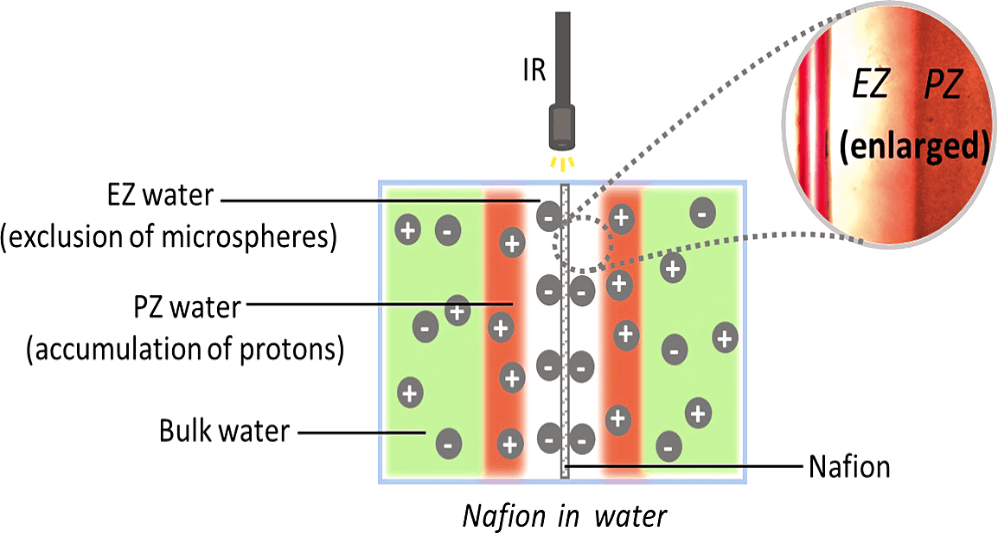The Fourth Phase of Water: Revolutionary Discoveries in Hydration Science
Table of Contents
- Introduction to the Fourth Phase of Water
- The Discovery of Exclusion Zone (EZ) Water
- Properties of Structured Water
- Biological Significance of the Fourth Phase of Water
- The Role of Infrared Light in Expanding EZ Water
- Practical Applications in Health and Environment
- Structured Water and Its Environmental Impact
- Conclusion: The Future of Hydration Science
Introduction to the Fourth Phase of Water
Water, one of the most essential elements of life, has traditionally been understood in three states: solid, liquid, and vapor. However, recent discoveries have unveiled a revolutionary fourth phase that exists between liquid and solid. Known as structured or “EZ” (Exclusion Zone) water, this phase introduces new perspectives on how water functions within biological systems, particularly in hydration, cellular activity, and energy transfer.
A [Liquid Water] –> B [Structured EZ Water]
B –> C [Exclusion Zone Formation]
C –> D [Negative Charge Generation]
D –> E [Energy Storage]
The Discovery of Exclusion Zone (EZ) Water
Dr. Gerald Pollack’s groundbreaking research on the fourth phase of water reveals that under certain conditions, water forms a structured, semi-crystalline state known as EZ water. Unlike regular liquid water, EZ water is denser, more viscous, and holds a negative charge. This phase exists adjacent to hydrophilic (water-attracting) surfaces, such as biological membranes, and can expand under the influence of infrared light.
Properties of Structured Water
Molecular Structure and Behavior
Structured water differs significantly from the more familiar H2O arrangement. EZ water forms a hexagonal molecular structure (H3O2), which is more organized than regular water. This arrangement enhances its ability to store energy and interact with proteins, lipids, and cellular structures, optimizing biological functions such as nutrient transport and detoxification.
Hydrophilic Interactions
EZ water forms near hydrophilic surfaces, building into layers that exclude impurities, such as dissolved solutes or particles. This exclusion creates a clear, boundary-like zone that is energetically stable. These layers also play a crucial role in biological hydration, affecting cell membrane potential, metabolic processes, and intracellular communication.
Biological Significance of the Fourth Phase of Water
Energy Transfer in Cells
The discovery of water’s fourth phase has immense implications for understanding cellular energy. EZ water is capable of absorbing energy from infrared radiation and other environmental sources and storing it in its structure. This energy can be released to drive metabolic reactions, offering an alternative mechanism for cellular energy transfer beyond ATP (adenosine triphosphate).
Cellular Hydration and Functionality
EZ water’s exclusion properties enhance cellular hydration by ensuring that only the purest, most structured water enters cells. This high-quality hydration improves overall cell function, enhances detoxification, and protects against oxidative stress. Additionally, structured water may be critical in maintaining the electrochemical gradients necessary for nerve function, muscle contraction, and energy production.
Implications for Human Health
The presence of EZ water in human tissues suggests that optimizing structured water levels could lead to significant health benefits. Research indicates that structured water may improve hydration efficiency, enhance nutrient absorption, and bolster immune function. Furthermore, it could aid in detoxifying cells and tissues, potentially reducing the risk of chronic diseases associated with inflammation and oxidative damage.
The Role of Infrared Light in Expanding EZ Water
One of the most fascinating aspects of the fourth phase of water is its ability to expand under infrared light. Infrared radiation, commonly emitted by the sun and many environmental sources, increases the size of the exclusion zone. This process allows cells to harness additional energy from their surroundings, which may explain why exposure to natural light promotes overall health and well-being.
Practical Applications in Health and Environment
Incorporating infrared light into daily life through exposure to sunlight or infrared saunas may enhance the body’s ability to maintain and expand structured water within cells. This discovery has far-reaching implications for personal health and environmental and industrial applications where structured water can optimize water filtration, waste treatment, and renewable energy storage.
Structured Water and Its Environmental Impact
Environmentally, structured water may enhance soil hydration and plant growth, reduce the need for irrigation, and improve water purification processes, offering sustainable solutions for agriculture and ecosystem health.
Potential for Enhanced Water Purification
EZ water’s unique exclusion capabilities make it a promising candidate for advanced water purification systems. By leveraging its ability to exclude contaminants, structured water could be utilized in novel filtration technologies that offer more efficient and eco-friendly purification methods, providing cleaner drinking water to communities worldwide.
Energy-Efficient Water Processing
The energy-storing potential of EZ water offers a new frontier in energy efficiency. By integrating structured water into energy systems, renewable energy technologies that utilize the latent energy within water molecules may be possible. This innovation could reduce our dependence on fossil fuels and lead to more sustainable energy solutions.
Conclusion: The Future of Hydration Science
The discovery of the fourth phase of water has revolutionized our understanding of water’s role in biological systems and its broader implications for health and environmental sustainability. We uncover new ways to improve cellular hydration, energy storage, and detoxification processes by delving deeper into structured water. Integrating infrared light to enhance this phase further suggests practical applications in health, renewable energy, and water purification. As research continues to unfold, the potential for harnessing the power of structured water to benefit both human health and the environment becomes increasingly evident.
Related Links
Sculpted By Light, Killed By Our Choices
Vitamin D from the sun reduces all-cause mortality
Quantum Systems and Its Relevance to Humans and The Sixth Extinction
Exclusion Zone Phenomena in Water—A Critical Review of Experimental Findings and Theories
Exclusion-zone water inside and outside of plant xylem vessels
The Featured Image above is used with grateful acknowledgment to the authors, Anqi Wang and Gerald Pollack. This picture is from the research article “Effect of infrared radiation on interfacial water at hydrophilic surfaces.”
